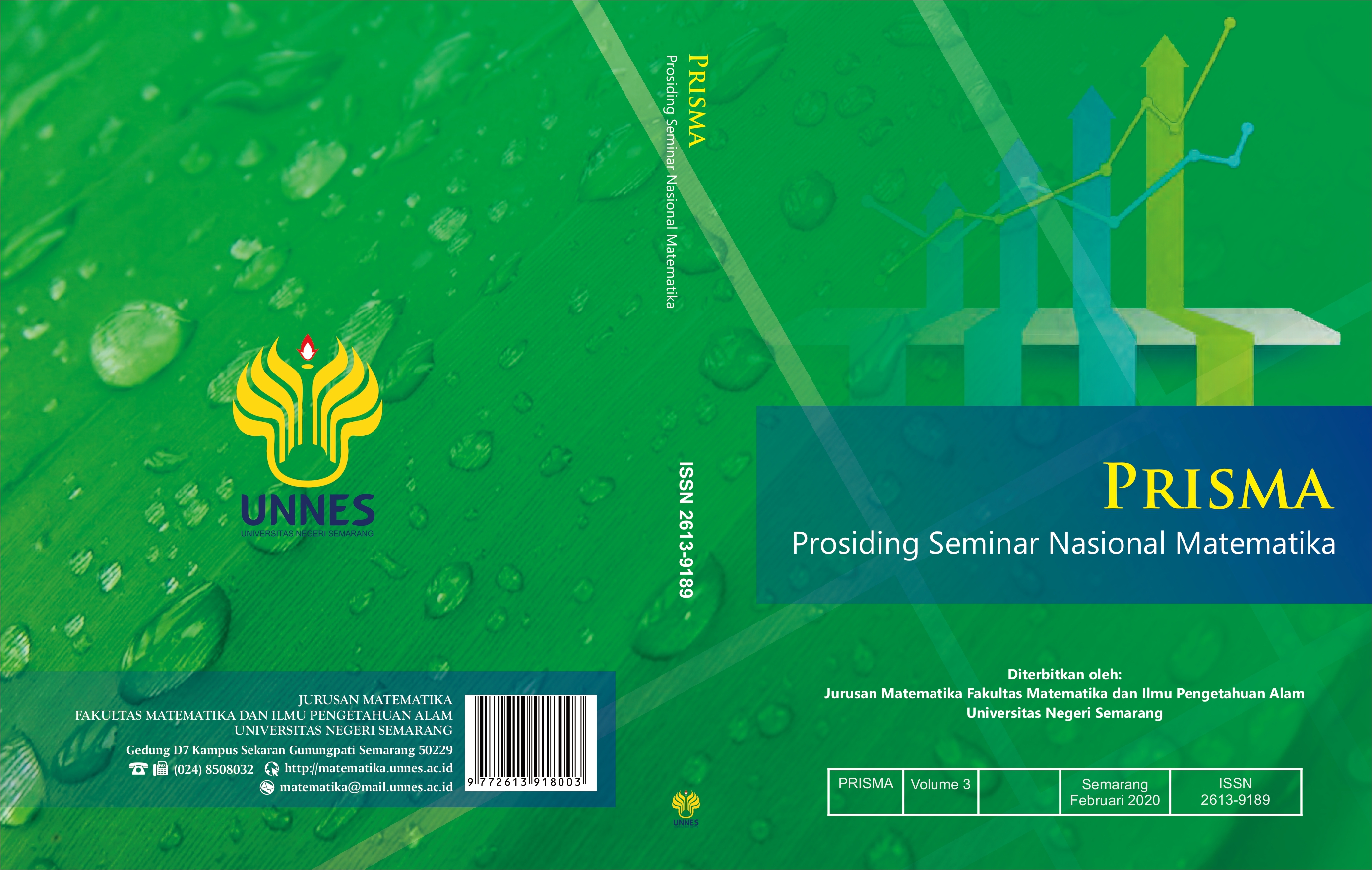How to Develop the Algebraic Thinking of Students in Mathematics Learning
Main Article Content
Abstract
The aim of this article is to explain how to develop the algebraic thinking of students in mathematics learning. Algebraic thinking is ability of students to analyze, make generalization, solve problems, predict, justify, and prove as well as model some situations. It is an essential and fundamental element of mathematical thinking. But apparently, based on the results of previous literature studies, obtained some facts that algebra is one of the materials that is difficult to be mastered by students. This article is written based on several scientific journals. This article is going to explain some strategies for developing algebraic thinking skills. The strategies are learning using 7E learning cycle model (elicit, engagement, exploration, explanation, elaboration, evaluation, and extend), learning using technology (video-game; software that are spreadsheet, geogebra, group explorer, pearson’s, MyMathLab, digital mathematics environments, SimCal), learning using manipulatives, learning using multiple representation that is realistic approach (orientation, exploration, internalization, and evaluation), and also through government regulation that is early learning.
Article Details
References
Ayieko, Rachel Angela. (2018). The Relationship between Opportunities to Learn Algebra and Student’s Algebra Achievement: A Comparative Study. Global Education Review, 5 (3), 29-56.
Blanton, M. L., & Kaput, J. J. (2011). Functional Thinking as a Route into Algebra in The Elementary Grades. In Early Algebraization, Springer, Berlin, Heidelberg, 5-23.
Chan, H. H. (2015). How do They Grow? Mathematics Teaching in the Middle School, 20(9),548-555.
Dindyal, J. (2003). Algebraic Thinking in Geometry at High School Level. Illinois State University.
Fennema, E., & Sherman, J. A. (1976). Fennema-Sherman Mathematics Attitudes Scales: Instruments Designed to Measure Attitudes toward The Learning of Mathematics by Females and Males. Journal for research in Mathematics Education, 7(5), 324-326.
Herbert, K., & Brown, R. H. (1997). Patterns as Tools for Algebraic Reasoning. Teaching Children Mathematics, 3, 340-345.
Kaput, J., Hegedus, S., & Lesh, R. (2007). Technology Becoming Infrastructural in Mathematics Education. Foundations for The Future in Mathematics Education, 173-192.
Kieran, C. (2007). Learning and Teaching Algebra at The Middle School through College Levels: Building Meaning for Symbols and Their Manipulation. Second Handbook of Research on Mathematics Teaching and Learning, 2, 707-762.
Knight. (2013). Physics for Scientists and Engineers: A Strategic Approach 3th Edition. USA: Pearson Education.
Kohl, P.B., & Finkelstein, N.D. (2006). Effect of Instructional Environment on Physics Students’ Representational Skills. Physical Review Special Topics-Physics Education Research, 2(1), 010102.
Kohl, P.B., & Finkelstein, N.D. (2008). Patterns of Multiple Representation Use by Experts and Novices during Physics Problem Solving. Physical Review Special Topics-Physics Education Research, 4(1), 010111.
Kusumaningsih, W., Darhim, Herman, T., Turmudi. (2018). Improvement Algebraic Thinking Ability Using Multiple Representation Strategy on Realistic Mathematics Education. Journal on Mathematics Education , 9(2), 281-290.
Matos, A., & Ponte, J. P. D. (2009). Exploring Functional Relationships to Foster Algebraic Thinking in Grade 8. Quaderni di Ricerca in Didattica (Matematica), 1-9.
Maudy, S.Y., et al (2018). Student’ Algebraic Thinking Level. International Journal of Information and Education Technology, 8(9), 672-676.
Manly, M., & Ginsburg, L. (2010). Algebraic Thinking in Adult Education. National Institute for Literacy.
National Council of Teachers of Mathematics. (2000). Principles and Standards for School Mathematics. Reston, VA: NCTM.
Nilklad, L. (2004). College Algebra Students' Understanding and Algebraic Thinking and Reasoning with Functions.
Ntsohi, M. M. (2013). Investigating Teaching and Learning of Grade 9 Algebra Through Excel Spreadsheets: A Mixed-Methods Case Study for Lesotho (Doctoral dissertation, Stellenbosch: Stellenbosch University).
Nurhayati, D.M. et al. (2017). Analysis of Secondary School Students' Algebraic Thinking and Math-Talk Learning Community to Help Students Learn. International Conference on Mathematics and Science Education (ICMScE), 895, 1-7.
Pratiwi, V., Lidinilah, D.A.M., Herman, T. (2017). Upper Elementary Grades Students' Algebraic Thinking Ability in Indonesia. IJAEDU- International E-Journal of Advances in Education, 3, 705-715.
Rahmawati, A., Kartono, & Hidayah, Isti. (2019). Algebraic Thinking Ability Based on Mathematics Disposition in Learning Cycle 7E Model. Unnes Journal of Mathematics Education Research, 8 (1), 18 – 24.
Siew, N.M., Geofrey, J., & Lee, N.L. (2016). Students’ Algebraic Thinking and Attitudes towards
Algebra: The Effects of Game-Based Learning using Dragonbox 12 + App. The Research Journal of Mathematics and Technology, 5(1), 66-79.
Toheri & Winarso, W. (2017). Improving Algebraic Thinking Skill, Beliefs, and Attitude for Mathematics Throught Learning Cycle Based on Beliefs. MPRA Paper No. 78290, 1-12.
Usiskin, Z. (1995). What Should Not be in The Algebra and Geometry Curricula of Average College-Bound Studetns?. The Mathematics Teacher, 88(2), 156-164.
Wagner, S. E., & Kieran, C. E. (1989). Research Issues in The Learning and Teaching of Algebra, 4.
Yulianingsih, U., & Hadisaputro, S. (2013). Keefektifan Pendekatan Student Centered Learning dengan Inkuiri Terbimbing untuk Meningkatkan Hasil Belajar. Chemistry in Education, 2(2), 149-155.
